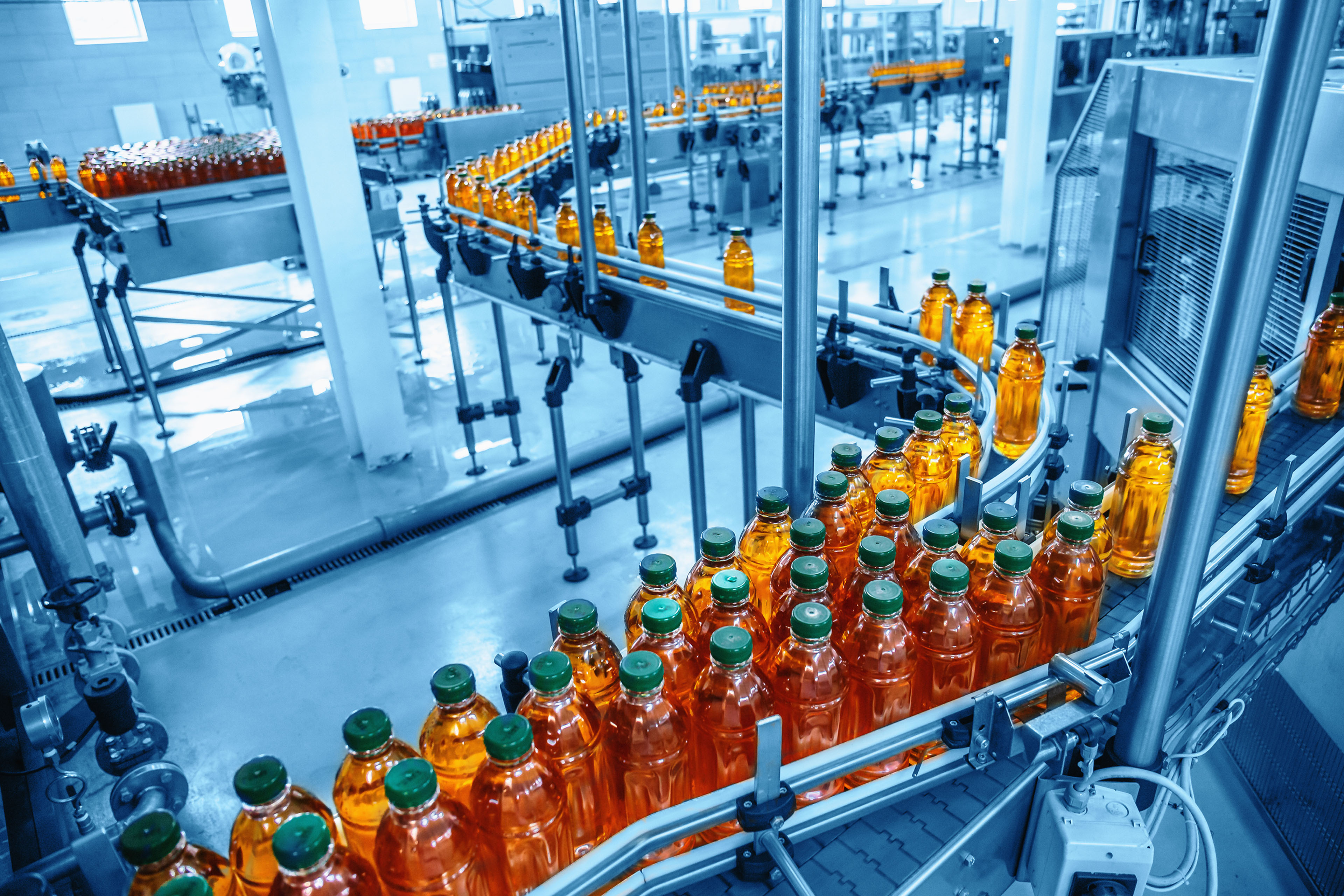EY refers to the global organization, and may refer to one or more, of the member firms of Ernst & Young Global Limited, each of which is a separate legal entity. Ernst & Young Global Limited, a UK company limited by guarantee, does not provide services to clients.

The concept of Extended Producer Responsibility (EPR) can help companies move further towards building a long-term circular economy balance.
In brief
- As waste generation increases in Europe, environmental organizations urge European 3R (Reduce, Reuse, Recycle) ambitions to focus more on prevention and reuse.
- By the end of 2024, EU countries should ensure that producer responsibility schemes are established for all packaging.
- EPR can help companies achieve their packaging waste targets and prioritize their eco-design strategies.
In the past years, consumers, businesses, and legislative bodies have sought to reduce the amount of single-use plastic and packaging waste. While EU figures show a 6% increase in waste generation in a year time (2020-2021), the latest debates observed on 22nd November 2023, during the European Parliament plenary vote for Packaging and Packaging Waste Regulation (PPWR), show members’ indecision between prevention and recycling as the top priority action to reduce the environmental impact of packaging.
Let us take a closer look at how the EPR concept, introduced in Europe more than 30 years ago and still evolving, can help companies not only comply with regulation but move further towards building a long-term circular economy balance.
A focus on prevention and reuse
By the end of 2024, EU countries should ensure that producer responsibility schemes are established for all packaging. By 2030, 100% of all packaging is to be recyclable, 20% of beverage containers reused and large-scale distributors (>200m²) will have to devote 10% of their floor space to bulk sales. These are a few of the 3R (Reduce, Reuse, Recycle) ambitions set by the European legislation.
European legislation, such as the Packaging and Packaging Waste Directive (PPWD), aims at “preventing the production of packaging waste, promoting the reuse, recycling and other forms of recovering of packaging waste, instead of its final disposal” and sets out strong reuse and prevention ambitions in its PPWR proposal.
The recent European debates show members’ indecision between prevention and recycling as the top priority action to reduce the environmental impact of packaging.
The debates of the latest weeks have been marked by strong lobbying work from fast-food industry companies on the one side, mostly defending single use over reuse for takeaway beverages and food, and environmental organizations on the other, urging European Parliament members to stick to the proposed amendments. The outcome of the vote has triggered strong reactions as it watered down several of its reuse and prevention targets. Rapporteur Frédérique Ries (Renew, Belgium) stresses the urgent need for action, as the vote “ignores the reality of the figures: a 30% increase by 2030 if we don't act now. Of the 3Rs, only recycling escaped unscathed.” she declared.
While for some, the clear distinction between reuse and recycling may call into question the very hierarchy of waste management, businesses should prioritize waste prevention. They should eco-design their packaging following the EU Waste Framework Directive, a ranking system for waste management options according to their environmental impact. This hierarchy sets prevention waste as the preferred option, followed by reuse, recycling and recovery. Sending waste to landfills should be the last resort and should be avoided if possible. EPR schemes have proven to set the right framework to support companies in preventing waste, improving collection and recycling rates, eco-designing, and testing new reuse systems.
What is EPR and how does it work?
The EPR enlarges companies’ scope of responsibility to bear the financial and/or organizational responsibility for their waste (collecting, sorting, recycling). By encouraging the eco-design of packaging, it has shown to be an effective model for closing the loop in the packaging value chain and creating a circular economy balance.
How can EPR concepts help companies to put ambition into action?
From its premises in the 1990s, EPR has been successful in managing the end-of-life stages of packaging (collecting, sorting, recycling). Today, this model must show the way to go further to achieve its waste reduction objectives and offer a more circular model of production, consumption, and distribution, for example allowing Producer Responsibility Organizations (PRO) to play a greater role in the upstream stages of the life cycle, such as preventing waste and designing packaging for reuse.
Some good practices and challenges of EPR schemes include:
- Going beyond waste management to waste prevention, thus following the waste hierarchy principles, such as bringing companies the technical expertise needed for reducing packaging to a minimum while preserving its key functionalities (protecting and transporting the product, communicating legal information to the consumer), implementing large-scale bulk sales and/or reuse systems, for example.
- Incentivizing eco-design, in other words, considering the end-of-life of the packaging in the design process: reducing unnecessary packaging, removing all elements incompatible with its recycling, incorporating recycled content, to name a few.
- Promoting eco-modulation in the EPR fee structure to encourage good practices (bonuses) and ensure they do not disadvantage companies, while increasing fees on non-compliant packaging (maluses).
- Effectively communicating with consumers by pedagogically explaining packaging removal and/or alterations and raising awareness about sorting gestures.
EPR schemes have proven to set the right framework to support companies in preventing waste, improving collection and recycling rates, eco-designing, and testing new reuse systems.
The producer responsibility provides the basis on which companies can define their packaging environmental ambitions. Companies assessing their packaging portfolio and implementing an effective waste management plan can also reach for taxonomy and CSRD compliance as ESRS 5 (European Sustainability Reporting Standard) is about resource use and circular economy.
Our Climate Change and Sustainability Services (CCaSS) team at EY can support you in:
- Assessing your company’s packaging compliance in regard to current and upcoming European and national regulation (PPWD, EPR, plastic taxes, Single Use Plastics Directive, Marking requirements, Food Contact Materials, etc.).
- Reviewing your company’s obligations and EPR requirements at the national and European level and providing a detailed overview of country differences.
- Assessing your company’s packaging portfolio and identifying alternative packaging solutions using eco-design strategies.
How EY can Help
Redesign your packaging strategy in accordance with existing and upcoming legislation.
Read moreService Leader
-
 Sophie Chirez
Sophie ChirezEY Belgium Climate Change and Sustainability Executive Director
Newsletters EY Belgium
Subscribe to one of our newsletters and stay up to date of our latest news, insights, events or more.
Summary
Despite recent endeavors, there is a growing quantity of packaging waste generation in Europe. The concept of Extended Producer Responsibility (EPR) has been successful in managing the end-of-life stages of packaging (collecting, sorting, recycling). Today, this model must show the way to go further to achieve its waste reduction objectives and offer a more circular model of production, consumption and distribution. The producer responsibility provides the basis on which companies can define their packaging environmental ambitions.
Related articles
How to make your packaging portfolio ready for recyclability compliance?
Soon, recyclability will be a minimum requirement for all packaging. Producers should take action today and assess their packaging portfolio.
How strategic sustainability will contribute to a greener consumer community
Why it matters for retail and consumer goods companies to make sustainability a core part of their organization's strategy and operations.




